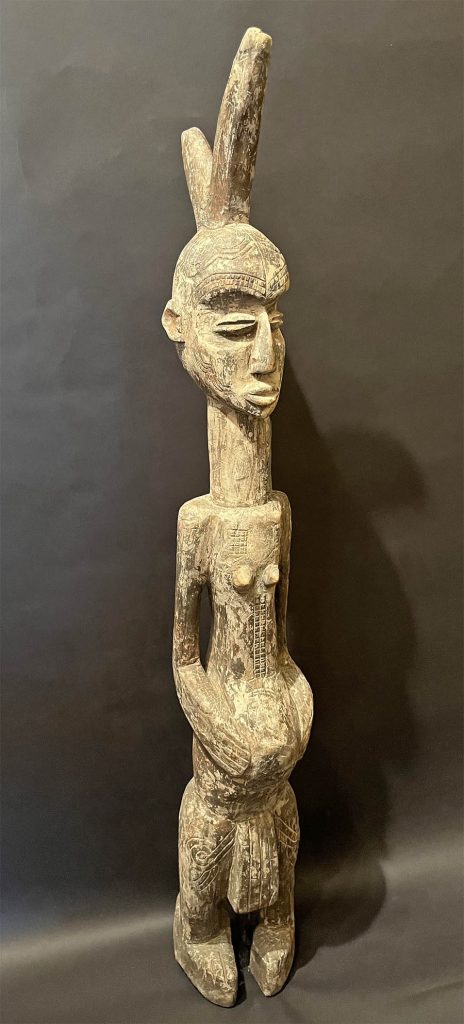
Songye, Democratic Republic of Congo
19th/early 20th century
Wood
Ht. 45”
Nkishi statues are considered by the Songye not merely a visual and metaphoric representation of power, it is above all to be receptacles of magical powers, and as such, an instrument of change and stabilization used by a community to counteract illness, sterility, famine, and other misfortunes caused by evil spirits. The horn, pegged into the head and scarification on its face, body, arms and limbs, alludes specifically to superhuman and bestial qualities. The magic ingredients, placed most often in the horn or simply in a cavity in the head and the abdominal protrusion, consists of a variety of animal, vegetable, mineral and human substances that activate and bring into play benevolent ancestral spirits. These elements are selected and ritually introduced into the figure by the nganga (magic specialist) according to his personal and secret formula. This specialist is then the overseer of the nkishi.
Rising from stacked-sole feet, the present figure stands straight on short legs with intricate scarification on the thighs. Between the thighs is carved a sort of loin cloth with striated pattern, above which a scored arrow points toward a large protruding stomach, which is a receptacle of magic powers. The long narrow body has a straight back and a pair of small, pointed breasts in front. Narrow shelf-like shoulders lead to an elongated neck that at one time probably has rows of glass beads encrusting it. The stylized face has convex lidded deep-set eyes and c-shaped ears. The forehead has scarification with a line scored from the top of the nose to the base of a two-prong horn inserted at the crown. The horn, like the big, protruded stomach, is another receptacle of magical power.
A large power figure like this one is rare. It was made to serve an entire village and kept for several generations. This figure is aged with some of the brown pigment faded away. Encrustation of the dark resin and hints of red pigment remain. A small strip of wood is scraped off the arm. It might be due to loss from aging, but it is not unusual for a believer to strip off a small part of the statue to mix with other particles to enhance a magical substance in order to prolong traditional use of the work.